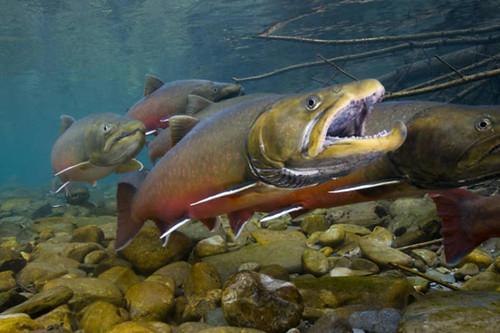
The U.S. Forest Service has a long history as a leader in conservation genetics, and this recently took an exciting step forward with the launch of the National Genomics Center for Wildlife and Fish Conservation.
The Forest Service’s wildlife genetics lab, which has been central to the Rocky Mountain Research Station’s conservation genetics program since 1998, has been reorganized and renamed to better reflect the scope of its work nationwide. The Center is a leading edge facility for advanced genomics research, nationally recognized, and works extensively with states, tribes, universities and private groups to address the management issues of over 60 fish and wildlife species.
Data collected by the Center will support the new Forest Service Forest Planning Rule with timely and cost-effective information on wildlife and fish species. Information developed by the Center will be made available through the network of USDA Climate Hubs to assist private forestland managers, farmers and ranchers in reaching their conservation goals.
With state-of-the-art technology and the development of new tools and techniques, the main objective of the Center is to provide cost-effective and reliable genomic data for improved species monitoring. By having more robust information, state and federal managers are better able to evaluate the genetic health and population viability of fish and wildlife species across the landscape. The discovery of a new fish species and the detection of invasive species are among the Center’s many contributions to the advancement of science and management.
Imagine an expansive landscape, filled with different and remote terrain, and being asked to determine if the area has been impacted by a new invasive species. This is a daunting challenge that land managers face on a regular basis. One of the Center’s specialties, analyzing samples of environmental DNA, or eDNA, shows great promise in addressing this challenge. This type of DNA has been separated from organisms into the surrounding environment and can be found in soil, water and air. Forest Service scientists are developing ways to determine what species are present by simply sampling a cup of water from locations across the landscape.
“eDNA is a highly sensitive method for detecting organisms in low abundance and is generally faster and extremely cost effective compared to traditional methods used to detect exotic or endangered species,” said Dr. Michael Schwartz, director of the center.
The use of eDNA is an innovative approach to inventorying and monitoring fish and wildlife species. eDNA is particularly effective for detecting rare species that can be difficult to sample using traditional methods. For example, researchers at the Rocky Mountain Research Station have been working with partners and collaborators on the threatened bull trout (Salvelinus confluentus) since 2008. Bull trout is a culturally significant species to several Tribes in the Northwest and Columbia River Basin. It is also a prized game fish, and land management and recreational angling are significantly influenced by whether or not this species is present in a given watershed. This species is particularly sensitive to changes in habitat and is also threatened by the introduction of the nonnative brook trout (S. fontinalis). Forest Service scientists have developed sampling methods to make eDNA surveys a reliable and accessible option for managers to detect the presence of bull trout and their invasive competitor, brook trout.
Forest Service scientists continue to develop eDNA techniques for detecting priority fish and wildlife. eDNA is just one method of non-invasive genetic sampling, which uses forensic-style DNA samples to monitor rare and sensitive species, employed by the Center.

